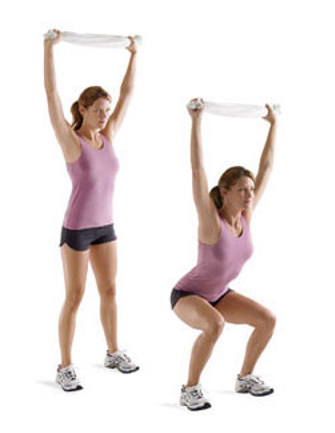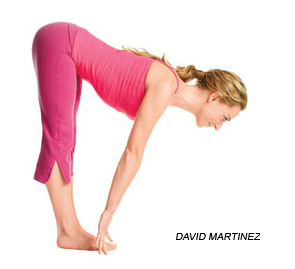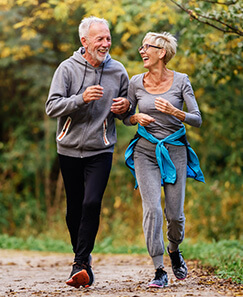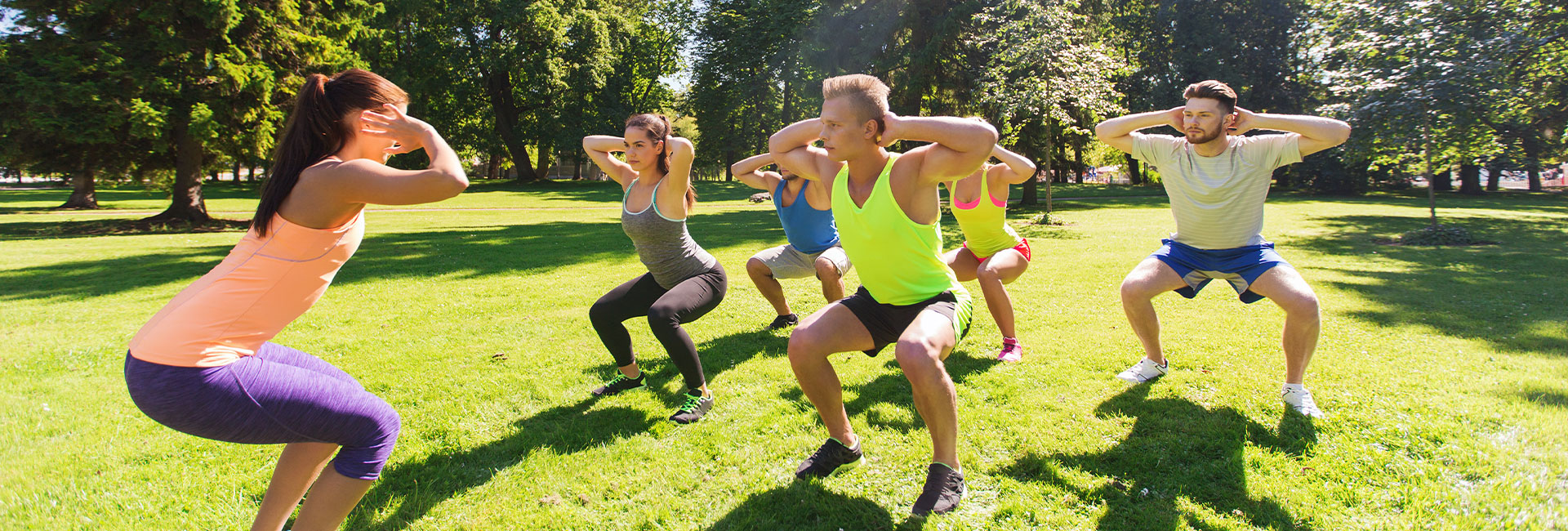Try an overhead deep squat with your arms overhead. To see how to do one or for a reminder, refer to our blog on the overhead deep squat and how to do one. Pay attention to how far down you can go. Do you have pain anywhere? We’ll recheck your squat at the end. The most common difficulty people have in performing an overhead deep squat through their entire range of motion (ROM) is because they are having trouble controlling the quality not the quantity of movement. To check, lay on your back with your legs straight. Bend both legs and bring your knees up toward your chest. This is the same motion your spine and legs move through doing a squat standing up. If you can bend your knees past your hips your motion is probably not the problem. You need to work more on controlling or stabilizing the motion when standing and squatting.
To work on performing a squat better here are 3 exercises to try, each a little bit more difficult.
- Exercise #1
Sit in a chair close to the edge of the seat with your feet flat on the floor and the insides of your feet shoulder width apart. Tighten your core by pulling your belly button toward the back of your back.
Reach overhead with both arms and stand up as straight as possible. Check to see if you bend forward or lean backward when you stand. Can you keep your balance? Keep your arms in the air and sit down (no crash landings!) Repeat 10 times.

- Exercise #2
Another exercise is to stand with the arms overhead, legs straight and the insides of your feet shoulder width apart. Tighten or engage your core again. Bend at the waist keeping your legs straight, attempting to touch your hands to the floor. If you need to, place a small towel under your heels to allow a little bend behind your knees. Hold the stretch for 30 seconds then straighten back up. Make sure you keep breathing normally throughout all of the exercises.

- Exercise #3
For the most advanced exercise, combine the first 2 exercises, with a squat thrown in. Start by sitting with your arms overhead and the insides of your feet shoulder width apart. Tighten your core then stand up. Keeping your legs straight, bend at the waist toward the floor. Keep your arms pointing down toward the floor and do a squat as deep as possible. If you find you lose your balance when attempting to squat deeply, stop at the furthest point you can maintain your balance and the squat. Hold that position for 5 seconds before you stand back up. Sit down again and repeat 5 times.
Finally, stand up and repeat a deep squat with arms overhead. It is entirely possible that you can now squat deeper than you first could. That is because the exercises you just performed helped correct the messages between the brain and the joints and muscles. The joints and muscles take those messages and help you move with better control. Better control or quality of movement allows a greater amount or quantity of motion.
If you have pain with any of these movements or exercises, it commonly means the body is sending you a message that something isn’t working right. Even when the pain goes away, there’s a very good chance the issue that lead to the pain is still a problem. It is recommended you consult your health care provider and a physical therapist to have this checked.
Start your journey to pain-free living today.
Our experts are committed to providing effective, efficient, and compassionate care to help you live a pain-free, active life. Our passion is to help every patient reach their goals on their journey to recovery and optimal performance.


